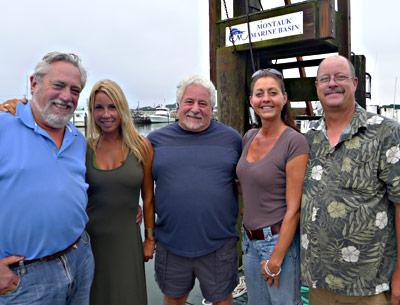Riled on Second House Road
Riled on Second House Road
Several residents of Second House Road in Montauk are calling for East Hampton Town to lower the speed limit on the two-lane artery and consider making it a no-through zone.
For more than a year now, since Ruschmeyer’s and Solé East have become popular nightspots for a younger crowd, residents have been complaining about speeding cars and commercial work trucks in the residential area, which also includes a school zone.
As it stands, the speed limit is 30 miles per hour, with a two-block stretch near the Montauk School’s playground and crosswalks reduced to 20 miles per hour. The problem, residents say, is that no one is observing the speed limit at all. “Someone is going to get hurt,” said Kimberly Esperian, who lives on the road.
Taxicabs are congesting the road, according to residents, speeding during all hours of the night and stopping and honking their horns to pick up fares in the middle of the road.
A few people who live along the road visited a meeting of the Montauk Citizens Advisory Committee on Sept. 9 and read from prepared statements about the problems. They also said patrons from the two clubs are noisy and urinate in their yards and on their flower beds. At the meeting, the committee discussed what could be done to eliminate the problem, with one member saying more stop signs should be posted.
Some wondered if the larger work vehicles could avoid the two-lane road by driving through the downtown area, turning north on Edgemere Road, and then left onto Industrial Road, right past the Surf Lodge, which also has its own share of traffic problems. After a long discussion, committee members decided to invite officials from the East Hampton Town Police Department to the next meeting, on Oct. 7, to explore a solution.
In an e-mail message this week, Police Chief Edward V. Ecker Jr. said that he and Lt. Chris Hatch, the Montauk Precinct commander, have received many complaints about speeding cars. The Police Department has tried using radar on the road, posted enforcement patrols during the worst hours, and carefully monitored the traffic, he said.
Chief Ecker said the 30-mile-per-hour limit on that road is sufficient and would be safe if it were regularly enforced. A no-through zone would be hard to put in place, he said, since Second House Road intersects on its north side with the busy Industrial Road, where several landscape and carting companies and a taxi company park their vehicles and store equipment.



